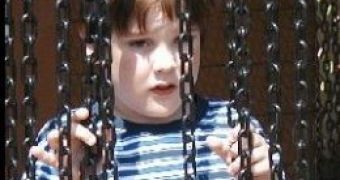Autism is a disorder of brain functioning that appears early in life, generally before the age of three. Children with autism have problems with learning capacity, social interaction, communication, imagination and behavior.
Autistic traits persist into adulthood, but vary in severity. Some of the adults with autism become rather normal, going to college and living on their own, while others never develop the skills of daily living. The origin or the cause that leads to this neurological disorder is still unknown.
Scientists discovered that the earliest sign for children autism can be traced by analyzing the maternal placenta - if there are signs of flawed cells at this levels, this may lead to a male or female baby with autism disorder.
Researcher Harvey Kliman of the Yale School of Medicine and his team have reported their finding in the June 26 online issue of Biological Psychiatry.
Until now, the appearance of abnormal inconspicuous flaws in the skin of the placenta have been related to several genetic defects, among which Down's and Turner's syndrome.
Down's syndrome is a condition resulting from a chromosome abnormality that usually is related to the appearance of an extra chromosome (instead of 2, there are 3 copies of chromosome 21.) The symptoms include mental retardation, from mild to severe degrees, hearing loss, speech impairment, learning difficulties, heart and lung problems. Also, the condition is characterized by distinctive facial features (slanted eyes, flat face, short stature etc.)
Turner's syndrome is also a chromosomal disorder that appears only in females and leads to short stature and lack of sexual development at puberty. It may also include heart and kidneys disorders and other malformations.
But the medical team lead by Kliman suspected that defects of the placenta can also be a sign of autism. In this respect, they microscope examined tissue samples from old placentas. The test revealed that the 1 in 3 samples coming from children later diagnosed with autism presented flawed cells.
Even if the doctors did not state that the microscopically pits in the placenta are a doubtless sigh of developing autism, it is for the better to have the placenta examined in order to prevent the eventual disorders of the child. Or, as Dr. Kliman said, "It's like the check engine light in your car ... It's basically saying something's going on ? Maybe you should have this checked a little more thoroughly."

 14 DAY TRIAL //
14 DAY TRIAL //